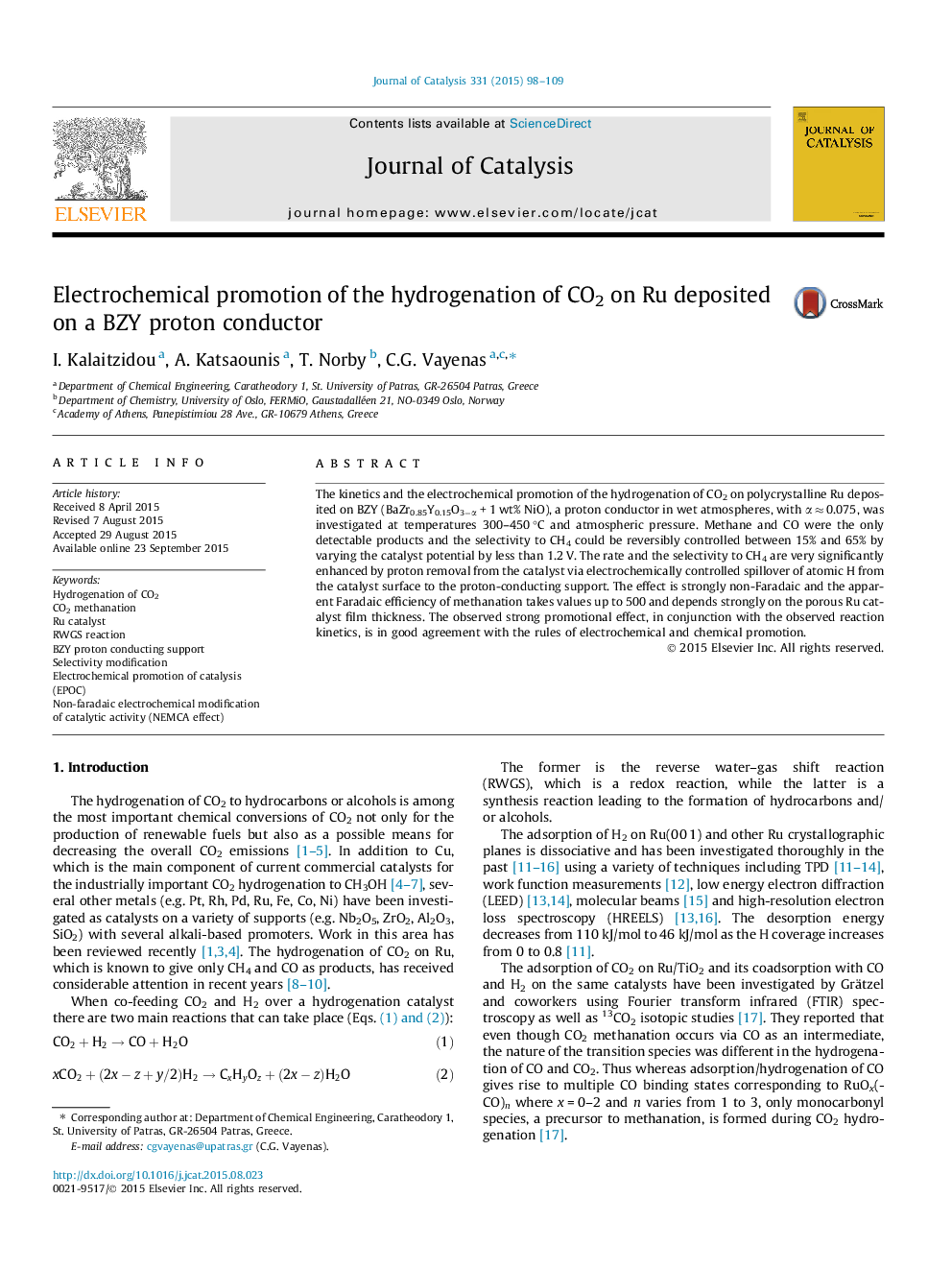| Article ID | Journal | Published Year | Pages | File Type |
|---|---|---|---|---|
| 60700 | Journal of Catalysis | 2015 | 12 Pages |
•Porous Ru catalyst films were deposited on BZY proton conducting support.•The selectivity of CO2 hydrogenation to CH4 on Ru is significantly enhanced via EPOC.•Proton removal from the catalyst enhances methanation and suppresses CO formation.•Selectivity to CH4 varies between 15% and 65% upon varying the catalyst potential.•The apparent Faradaic efficiency of methanation reaches values up to 500.
The kinetics and the electrochemical promotion of the hydrogenation of CO2 on polycrystalline Ru deposited on BZY (BaZr0.85Y0.15O3−α + 1 wt% NiO), a proton conductor in wet atmospheres, with α ≈ 0.075, was investigated at temperatures 300–450 °C and atmospheric pressure. Methane and CO were the only detectable products and the selectivity to CH4 could be reversibly controlled between 15% and 65% by varying the catalyst potential by less than 1.2 V. The rate and the selectivity to CH4 are very significantly enhanced by proton removal from the catalyst via electrochemically controlled spillover of atomic H from the catalyst surface to the proton-conducting support. The effect is strongly non-Faradaic and the apparent Faradaic efficiency of methanation takes values up to 500 and depends strongly on the porous Ru catalyst film thickness. The observed strong promotional effect, in conjunction with the observed reaction kinetics, is in good agreement with the rules of electrochemical and chemical promotion.
Graphical abstractFigure optionsDownload full-size imageDownload high-quality image (75 K)Download as PowerPoint slide
